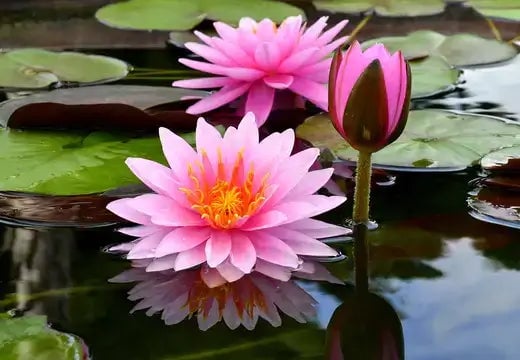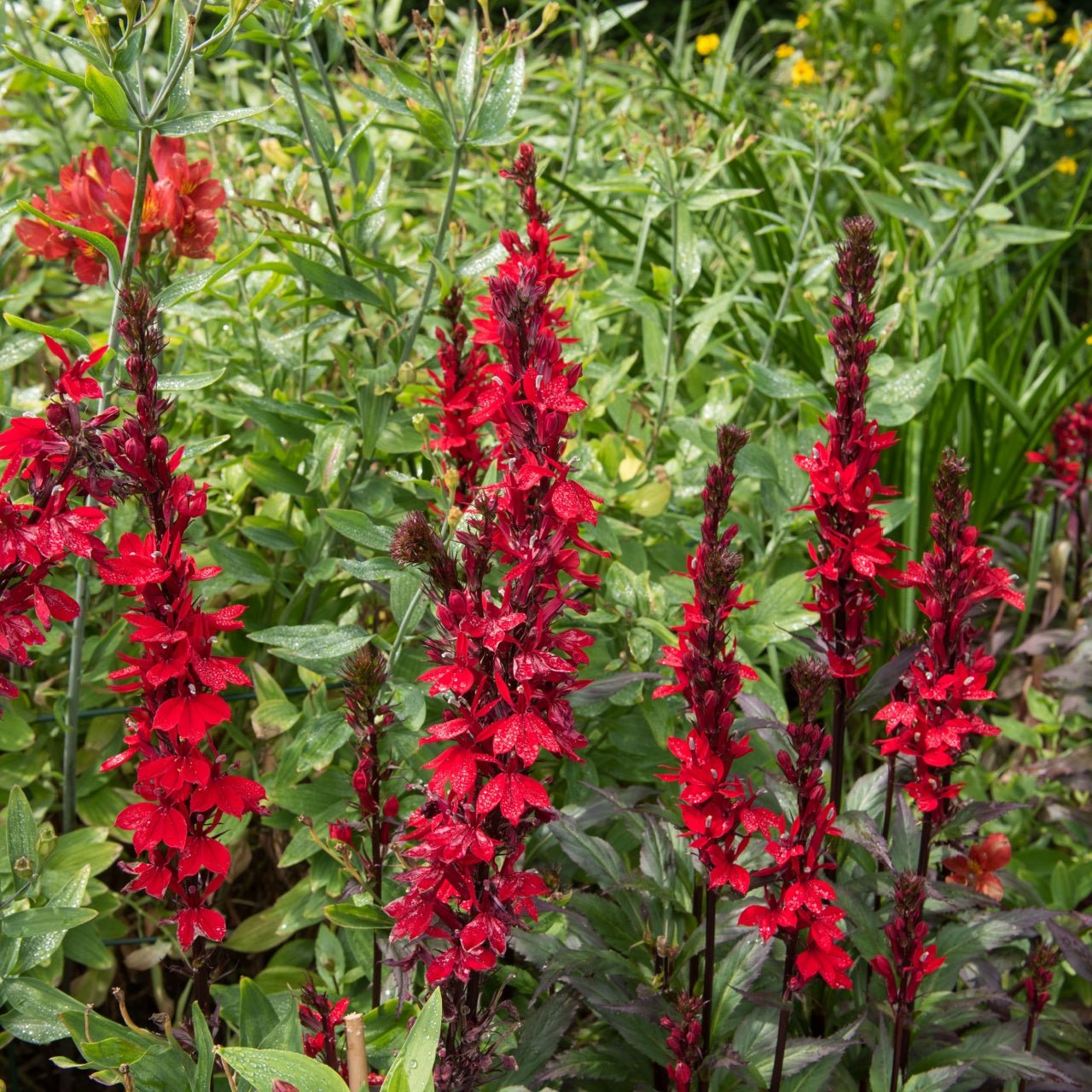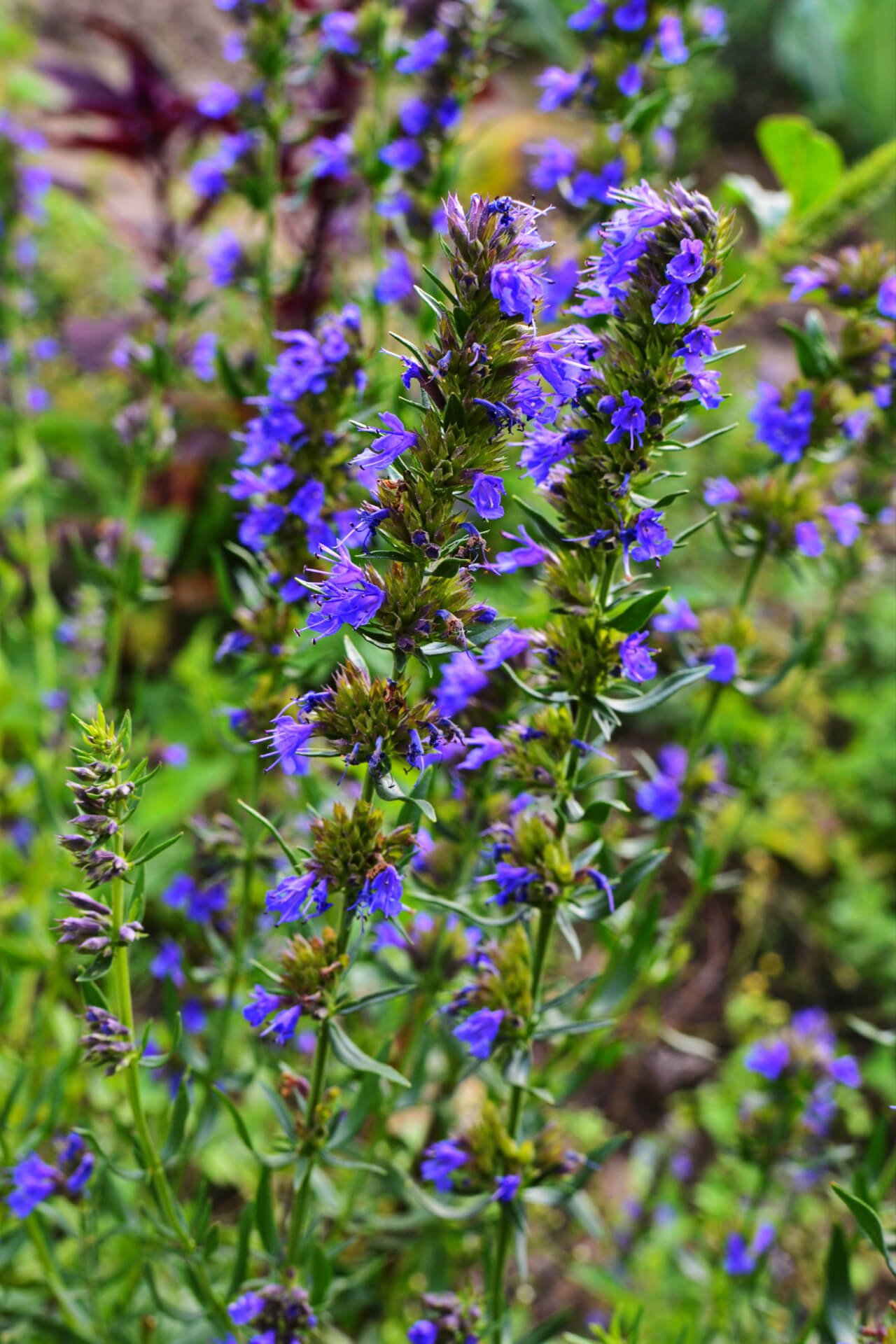Establishing an aquatic area such as a pond or water garden brings a distinctive allure to your outdoor environment. The calm water sounds mix with dense vegetation and flowers to produce a peaceful atmosphere. The proper water plant selection allows the ecosystem to flourish while keeping its natural beauty all year round. The appropriate combination of plants delivers functional benefits like shade oxygenation and visual beauty, which converts any water feature into a welcoming space for humans and wildlife. The following native perennial plants excel in aquatic settings when given adequate care.
Pickerelweed: Pickerelweed serves as an essential plant choice for every aquatic garden.
The perennial aquatic plant Pickerelweed (Pontederia cordata) displays blue-purple flower spikes that emerge gracefully from large glossy leaves. Anyone creating an aquatic garden should consider this plant, which does well in shallow water and pond edges. During summer, Pickerelweed displays its bright flowers, which draw in pollinating insects such as bees and butterflies.
The visual beauty of Pickerelweed pairs with its practical benefits for aquatic environments. The plant is an organic filter that maintains clear water by taking in surplus nutrients. This process halts algae overgrowth, which disrupts water balance. The thick leaves of Pickerelweed create safe places where small fish and various aquatic creatures find protection.
Pickerelweed should be planted in water no more than 12 inches deep to achieve optimal growth. This hardy plant needs little care and remains low-maintenance after it becomes established. Regularly thinning its roots prevents it from taking up too much space, allowing room for other plants to grow well.
Cardinal Flower: The Cardinal Flower brings a bold dash of red to your garden space.
The Cardinal Flower (Lobelia cardinalis) is a native plant that loves moist soil or shallow aquatic environments. Its brilliant red blossoms make it a striking feature in any water garden. Late summer and fall bring forth the spikes, which stand upwards of four feet tall as they bloom. Gardeners who want to achieve visual contrast in their water gardens choose this plant as their top pick.
The Cardinal Flower has significant ecological importance beyond its aesthetic appeal. Its blooms produce a lot of nectar, which attracts hummingbirds and multiple types of butterflies. This plant is a sturdy choice for gardeners.
For successful cultivation, maintain moist soil or position them adjacent to water sources. Cardinal Flowers perform best in environments with partial to full sunlight, while occasional mulching helps maintain soil moisture levels. Deadheading spent blooms from your aquatic garden requires minimal effort yet promotes continued flowering, maintaining garden vibrancy.
Marsh Marigold: A Cheerful Addition
The native perennial Marsh Marigold (Caltha palustris) lights up aquatic environments with happy yellow blossoms. As one of the first plants to bloom in early spring, Marsh Marigold displays vibrant yellow flowers, while most other plants remain dormant. The round, glossy leaves of Marsh Marigolds bring out the lush vibrancy of its flowers.
This plant grows well in marshy areas and shallow ponds and thrives along stream banks, making it adaptable to multiple water garden designs. Marsh Marigold enhances landscape aesthetics and protects the aquatic ecosystem by preventing erosion near water bodies and improving water quality.
Once planted, Marsh Marigold requires minimal care. This plant requires exposure to complete sunlight but can handle partial shade and survives standing water conditions and constantly wet soil. Position it so the water level stays no more profound than a few inches to avoid root rot. As time passes, Marsh Marigolds spread independently to fill gaps and develop a dense, colorful edge cover along your water feature.
Tips for Designing a Thriving Aquatic Garden
Your aquatic garden will thrive better if you select various water plants. Integrating submerged plants along with floating and marginal types results in an ecosystem with dynamic balance. Hornwort-submerged plants produce oxygen for water bodies while creating spaces for fish habitats, and Water Lilies floating on the surface block sunlight, which helps control algae development. The marginal plants above create vertical elements and function as a natural transition between the water feature and its surrounding environment.
Monitor each plant's required depth and light conditions carefully to promote healthy growth. Most aquatic plant species need full sunlight, partial shade, and precise water depth levels for optimal growth.
Most aquatic plants require full sunlight to partial shade paired with exact water depths to thrive. Ongoing maintenance practices like pruning and thinning preserve ecosystem health by stopping any single plant species from taking over.
Benefits of Incorporating Native Water Plants
Native perennials provide multiple benefits when included in an aquatic garden setting. Local climate and soil conditions have made these plants harder and simpler to maintain than foreign species. These native plants establish essential habitats and food supplies for area wildlife, such as pollinators, birds, and aquatic animals.
Using native plants in gardens leads to sustainability because they require less fertilizer, pesticides, and water. The deep root structures of native plants possess secure soil against erosion, especially near water bodies. Your aquatic setting becomes more beautiful through native species selection while you offer essential support to the entire ecosystem.
Bringing Your Aquatic Garden to Life
Aquatic gardens transform outdoor spaces by providing constant visual appeal and delivering environmental advantages every season. Selecting native perennials like Cardinal Flowers, Marsh Marigolds, or Pickerelweed transforms your water feature into a beautiful and ecologically balanced landscape.
Plan your aquatic garden carefully, considering plant-specific requirements alongside the harmony of the whole ecosystem. When you combine suitable plants with appropriate maintenance, your water space turns into an animated refuge that delights you and the animals it attracts.
Read more

Blackberry Cobbler Blackberries are filled with some vitamins and minerals and provide a delicious treat eaten raw or incorporated into a wide selection of recipes. Blackberries contain vitamins ...

Top Choices In Berry Plants For Fruit ProductionWhen it comes to berry plants, you want to know the highest yielding plants for the most fruit production. When it comes to berry plants, you have a ...




